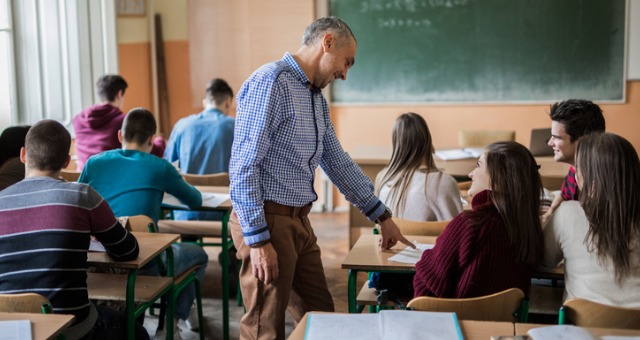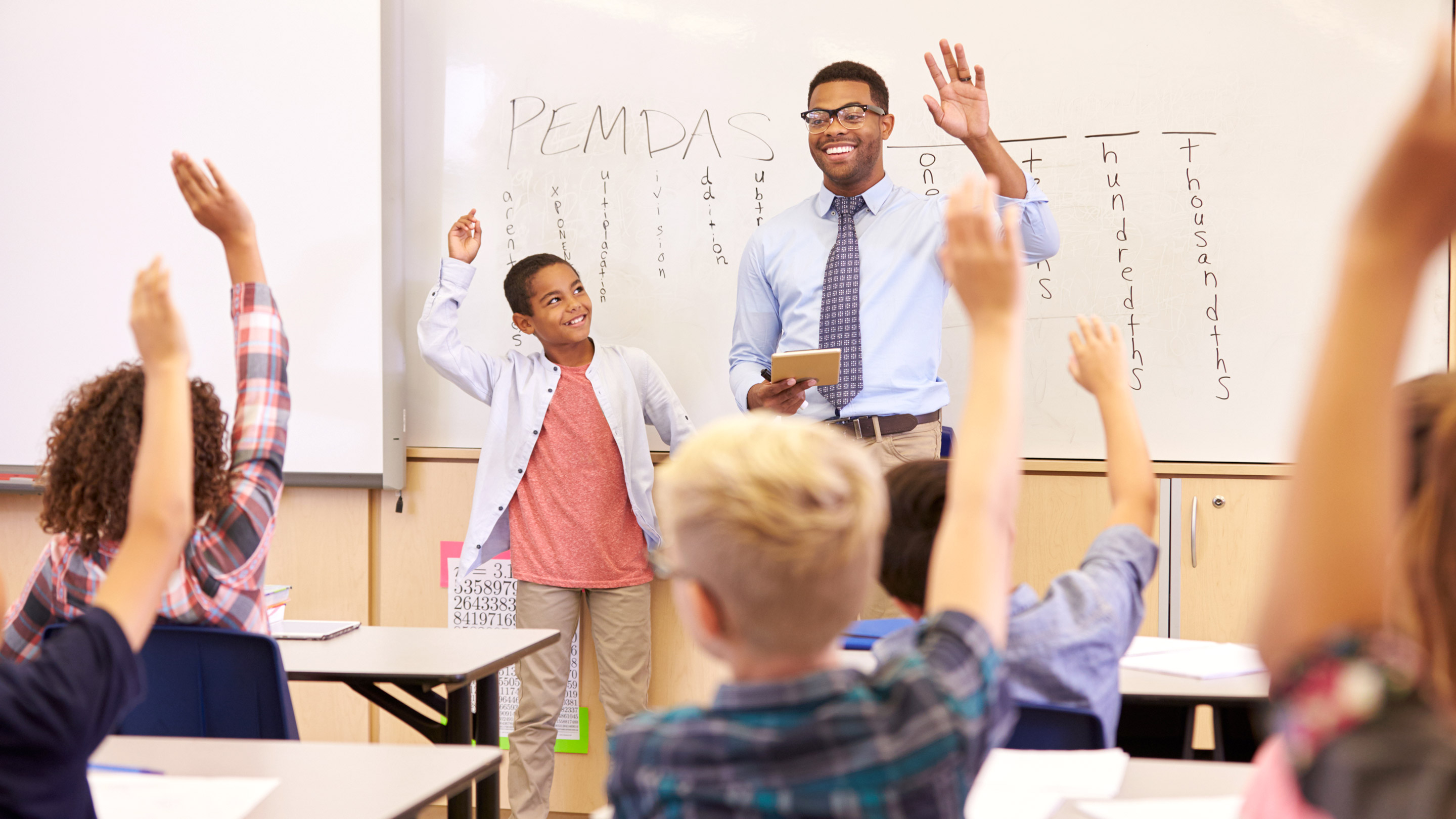Comprehensive Primary Science Tuition Singapore for Primary School Students
Comprehensive Primary Science Tuition Singapore for Primary School Students
Blog Article
Exploring the Different Mentor Techniques in Main Science Education Today
The landscape of main science education is advancing, with various teaching strategies obtaining prominence in contemporary classrooms. Inquiry-based learning, hands-on experiments, and the integration of technology are redefining exactly how teachers involve young minds. Additionally, collaborative techniques and separated direction are being employed to satisfy the diverse demands of pupils, improving both involvement and understanding. As we examine these techniques, concerns occur regarding their efficiency and the implications for future academic practices. What might these changes in method mean for the future generation of students?
Inquiry-Based Discovering
Inquiry-Based Discovering (IBL) is a pedagogical technique that encourages trainees to check out clinical ideas via questioning, investigation, and hands-on trial and error. This method highlights the role of pupils as active individuals in their learning, promoting vital reasoning and problem-solving skills. By involving with real-world concerns, trainees end up being curious and inspired, which boosts their understanding of clinical concepts.
In IBL, educators act as facilitators, assisting students as they navigate their inquiries as opposed to delivering information directly. This student-centered technique enables distinction, suiting various learning designs and rates. Pupils establish abilities in creating theories, designing experiments, and examining information, which are vital for clinical literacy.
In addition, IBL fosters collaboration among students, encouraging them to share concepts and findings. This collective query promotes social abilities and a feeling of community within the classroom. Additionally, the process of inquiry urges durability, as trainees learn to embrace failing as a stepping stone toward understanding.
Hands-On Experiments
Hands-on experiments are an important component of efficient scientific research education and learning, enhancing the principles of inquiry-based discovering. These experiments permit students to involve straight with scientific ideas, promoting a much deeper understanding through experiential learning. By adjusting products and observing results, young learners can comprehend abstract theories in substantial ways.
Such tasks advertise essential reasoning and problem-solving skills, as students hypothesize results, conduct experiments, and assess results. This process encourages them to ask inquiries, refine their understanding, and establish a scientific attitude. Hands-on experiments can be tailored to varied knowing designs, ensuring that all trainees have the possibility to engage meaningfully with the content.
Additionally, hands-on experiments commonly urge collaboration among peers, promoting team effort and communication abilities. Working in groups makes it possible for trainees to share ideas, talk about findings, and find out from each other, which improves their general instructional experience.
Including hands-on experiments into the main scientific research curriculum not only enriches the learning setting however likewise grows a long-lasting rate of interest in science. By proactively participating in their education and learning, pupils are more probable to develop a passion for clinical query that extends beyond the classroom.
Innovation Assimilation
Incorporating innovation into key scientific research education and learning has become significantly important in promoting student engagement and improving discovering outcomes. Using digital tools, such as interactive simulations, virtual laboratories, and academic software, offers students with possibilities to explore clinical ideas in ingenious ways. These resources help with a much deeper understanding of complex topics by pop over here permitting students to envision and manipulate variables that would certainly be unwise in a standard classroom setting.
Moreover, innovation assimilation motivates individualized discovering experiences. Students can progress at their own pace, revisiting tough ideas via multimedia resources, which satisfy different learning designs. This flexibility not just supports specific development but likewise cultivates a sense of freedom in students.
Furthermore, innovation works as a bridge to real-world scientific research, linking pupils with current research study and professional contributions. Accessibility to on-line data sources and scientific journals expands pupils' viewpoints on clinical questions and fosters important believing skills.
Collaborative Discovering
Collective knowing plays a vital duty in main scientific research education by cultivating team effort and interaction abilities amongst students. This technique motivates learners to interact, share expertise, and engage in analytic, which boosts their understanding of clinical principles. By taking part in group activities, students learn to verbalize their concepts, listen to diverse perspectives, and bargain options, all of which are important skills in both real-world and scholastic contexts.

Study shows that joint discovering can cause boosted motivation and involvement in science topics, as students find enjoyment in shared experiences (primary science tuition Singapore). In addition, this strategy prepares trainees for future collaborative undertakings, furnishing them with the abilities necessary for reliable synergy in college and expert environments. Inevitably, welcoming joint discovering in primary science education and learning can dramatically improve the learning experience and promote a much deeper understanding of scientific query
Differentiated Instruction

Set apart direction can show up in different ways, such as differing the material, processes, or products of learning. Educators might use tiered assignments that provide differing degrees of complexity, enabling trainees to work at their corresponding preparedness levels. Additionally, versatile grouping strategies can facilitate cooperation among trainees with different abilities, promoting peer knowing.
Assessment plays an essential duty in this technique, as it informs guideline and assists teachers comprehend each student's sites one-of-a-kind requirements. Developmental evaluations, such as observations and tests, can assist teachers in changing their techniques to boost discovering results. primary science tuition Singapore. Ultimately, by executing distinguished guideline in main this content scientific research education, instructors can cultivate an extra equitable and efficient discovering environment, equipping all pupils to reach their full capacity in understanding clinical phenomena
Final Thought
In recap, the varied teaching techniques in key science education and learning, including inquiry-based knowing, hands-on experiments, modern technology integration, collective learning, and separated guideline, jointly contribute to a much more efficient understanding environment. These techniques promote critical thinking, analytical skills, and a much deeper understanding of scientific principles. By implementing these strategies, teachers can develop helpful and interesting class that resolve the diverse demands of pupils, inevitably fostering a long-lasting passion in scientific research and enhancing academic achievement.
Inquiry-Based Knowing (IBL) is a pedagogical method that motivates trainees to explore scientific principles via questioning, examination, and hands-on trial and error.Joint discovering plays a crucial duty in main science education and learning by cultivating team effort and interaction skills among pupils.Research study indicates that collaborative learning can lead to raised inspiration and engagement in scientific research topics, as trainees find satisfaction in common experiences.In fostering a comprehensive discovering environment, distinguished guideline emerges as a key approach to suit the diverse requirements and capacities of students in main science education and learning. Inevitably, by implementing differentiated instruction in main science education and learning, educators can cultivate an extra effective and fair learning atmosphere, encouraging all trainees to reach their complete potential in comprehending clinical phenomena.
Report this page